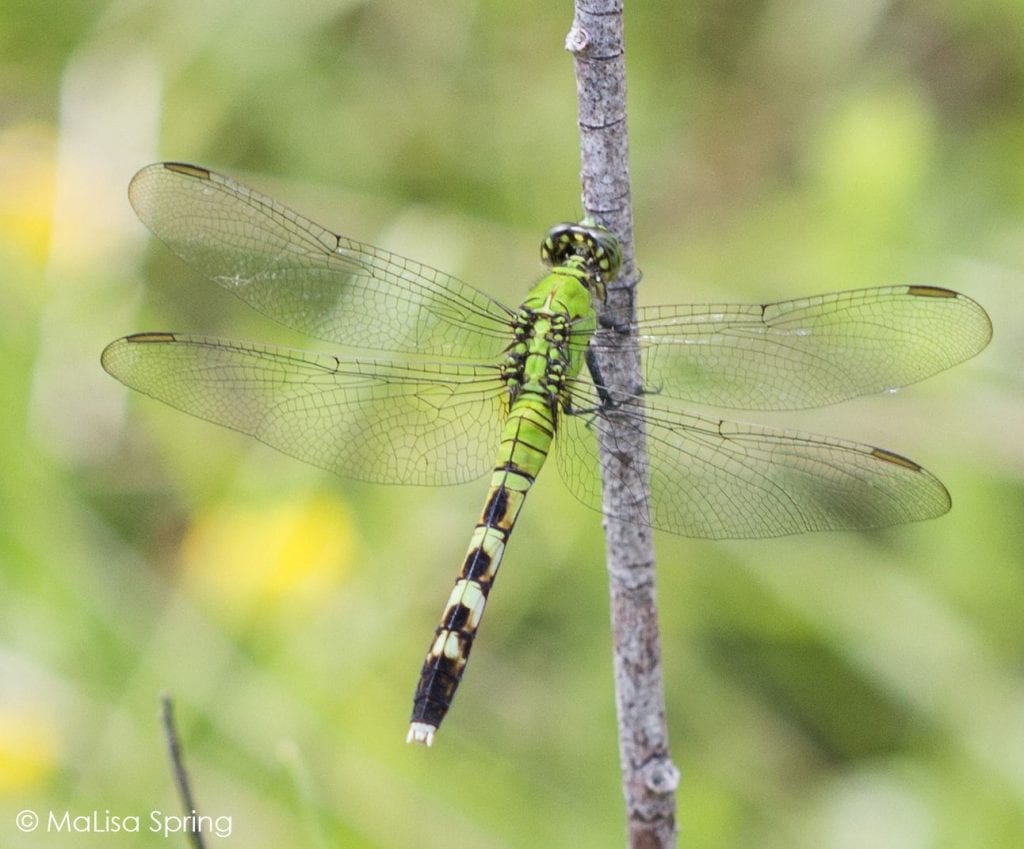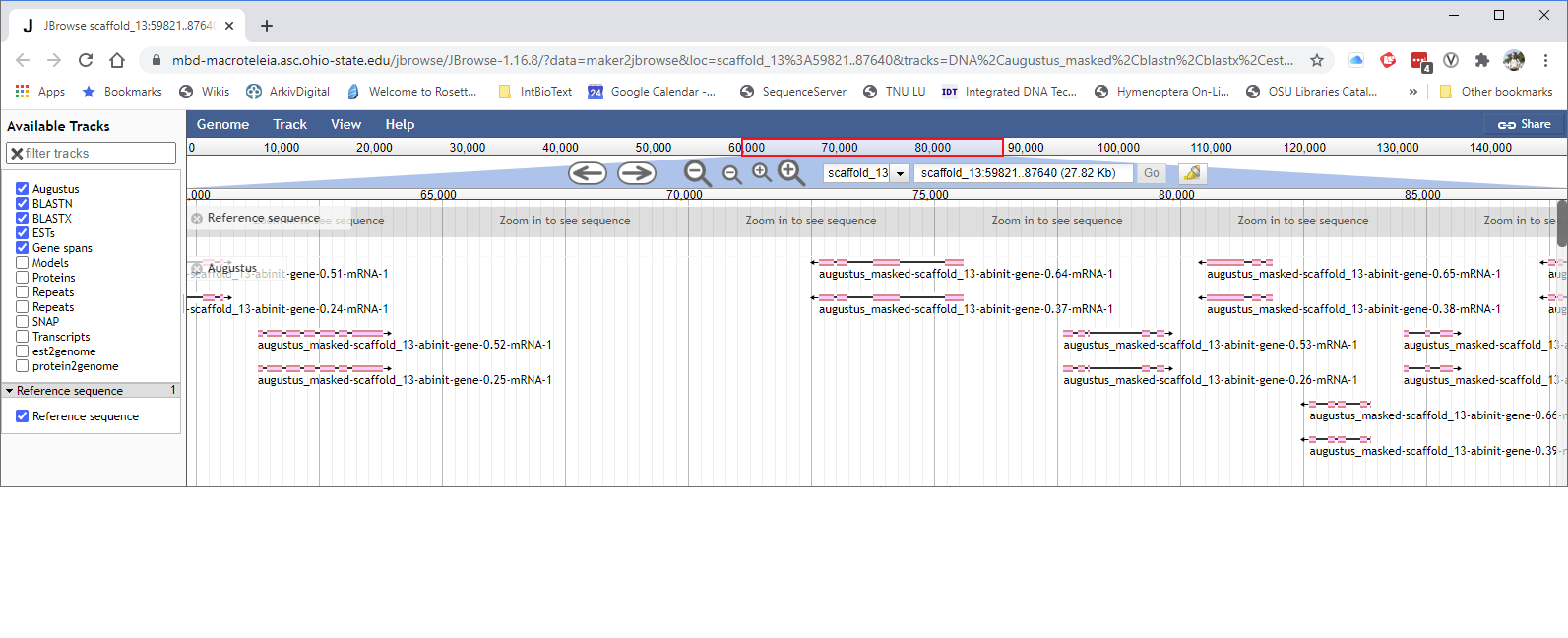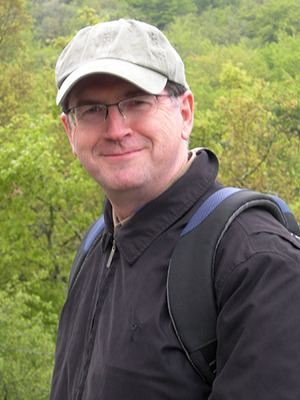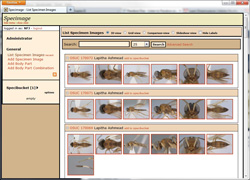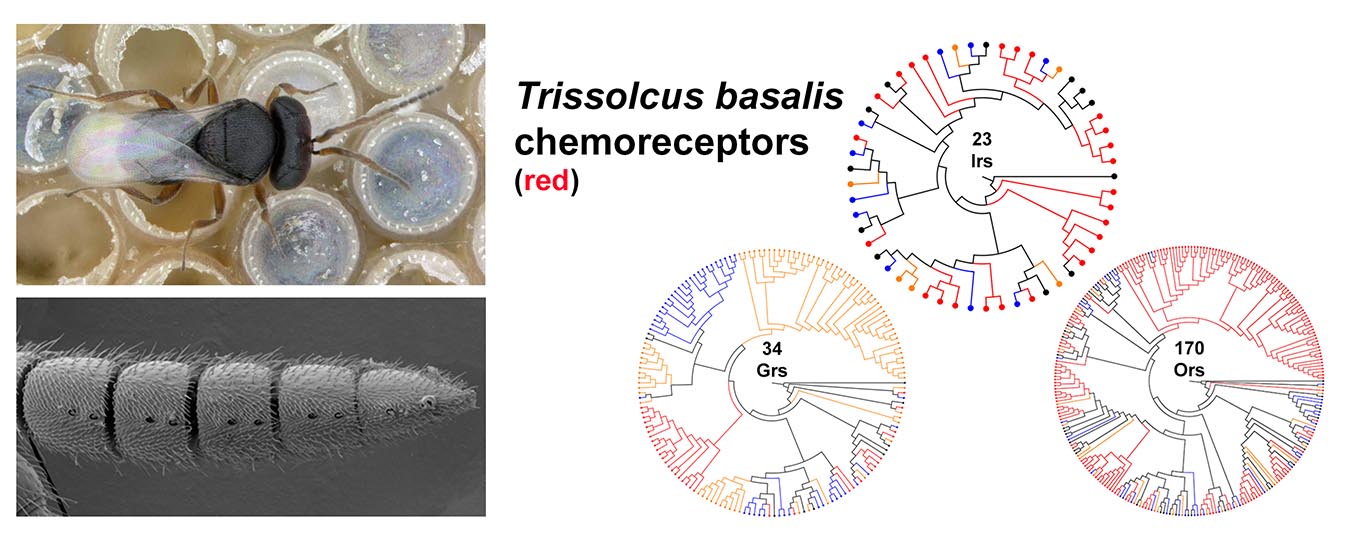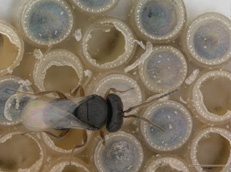
The Platygastroidea are a diverse group of over 6,000 described species of minute wasps, most of which are egg parasitoids of other insects or spiders. They seem to have originated from species that attack the eggs of Orthoptera (grasshoppers, crickets, etc.), but several clades have "shifted" to attack completely different groups of arthropods such as beetles, moths, spiders, mantids, or true bugs. Our work on the systematics of these wasps takes two complementary approaches. There is still a large number of species remaining to be described. Species discovery and description is still an important task, and there is plenty of exciting work to be done. There is nothing more awe-inspiring than looking through a newly collected sample and finding a fantastic new species, something that probably no one has ever seen before!
At the other end of the spectrum, we are trying to decipher the pattern of relationships among all these species in genera. With a robust hypothesis of phylogeny we can begin to ask questions about how these shifts from one host group to another have occured and just why there are so many species. This work combines both morphological and molecular data, and we are actively working to incorporate the newest nextgen sequencing tools to generate data for phylogenetic analyses.
One spinoff from the systematics work has been a project to sequence the genome of one species of platygastroid, Trissolcus basalis (Wollaston), an egg-parasitoid of the southern green stink bug, Nezara viridula (L.), an important agricultural pest in warm regions around the world. We are currently working on annotation of the genome and are specifically interested in their chemoreceptor repertoire.
